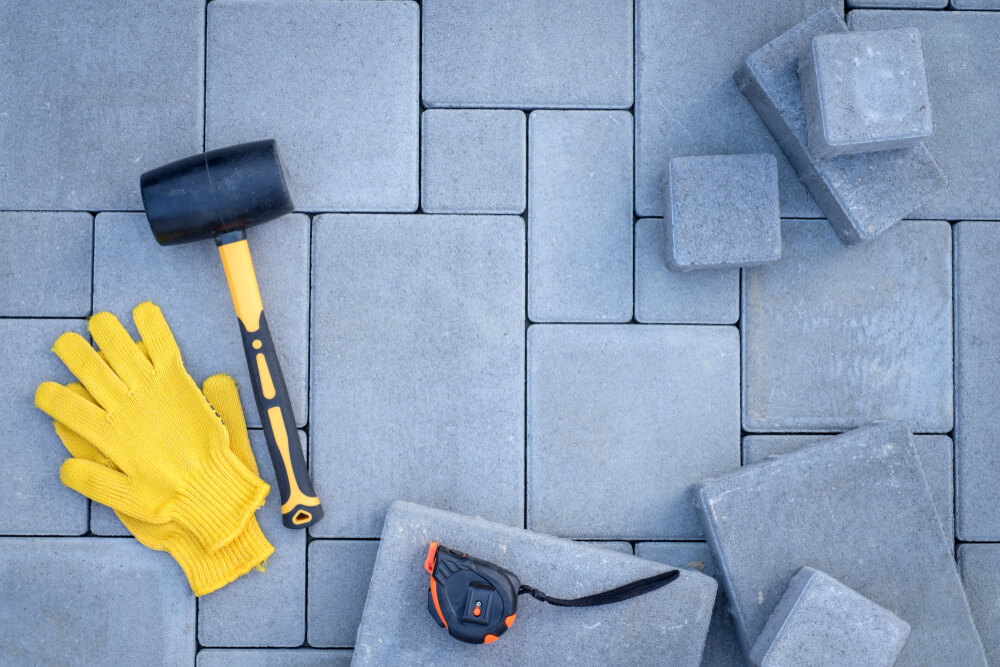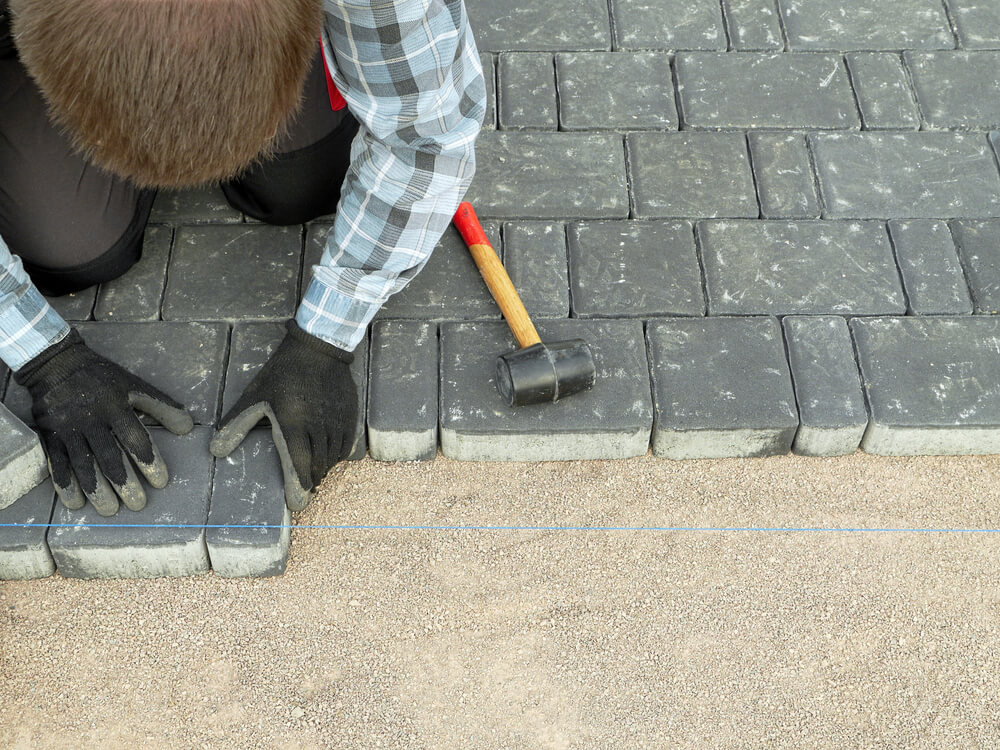Your concrete pad driveway is not just an essential part of your home’s curb appeal but also a substantial investment. To ensure its longevity and pristine appearance, proper maintenance is key. In this guide, we at Cricket Pavers will walk you through the essential steps on how to maintain a concrete pad driveway, providing you with valuable insights into driveway care.
Initial Care and Curing Process
When investing in a new concrete pad driveway, it’s crucial to allow sufficient time for the curing process, a critical phase that sets the foundation for the long-term durability and resilience of your driveway. The initial seven days are essential for basic curing, allowing the concrete to attain a certain level of strength to bear some load. However, for optimal strength and the development of a robust crystalline structure within the concrete, it’s recommended to refrain from parking heavy vehicles on the newly laid surface for at least 14 days. The science of curing involves a chemical process that hydrates cement particles, forming a strong and durable structure. Your patience during this critical period contributes to the concrete’s maximum compressive strength, enhancing its resistance to wear, impact, and environmental factors, ensuring a surface that withstands the test of time. Curing times can vary based on factors such as weather conditions, concrete mix composition, and ambient temperature, requiring adaptability for optimal performance. By refraining from parking on your new concrete pad driveway during the prescribed curing period, you take a proactive measure to protect your investment, preventing potential surface damage, indentation, and compromise to the overall structural integrity of the concrete. In essence, while a brief adjustment to your parking routine may be needed, the patience exercised during the curing phase ensures a concrete pad driveway that not only looks impeccable but also serves as a robust foundation for your property for years to come.
Regular Cleaning
One of the simplest yet most effective ways to maintain your concrete pad driveway is regular cleaning. Dirt, oil, and debris can accumulate over time, leading to stains and potential damage. To clean your driveway:
Sweep regularly: Use a stiff broom or a leaf blower to remove leaves, dirt, and debris. Regular sweeping prevents the buildup of abrasive materials that could scratch the surface.
Power washing: Invest in a pressure washer to give your driveway a deep clean. This will help remove stubborn stains, mold, and mildew. Be cautious with the pressure settings to avoid damaging the concrete.
Stain Prevention and Removal
Concrete’s porous nature makes it susceptible to staining, emphasizing the importance of proactive measures to maintain the pristine appearance of your driveway:
Seal your driveway: Regularly applying a high-quality concrete sealer every 2-3 years serves as a proactive defense against potential stains. This protective barrier not only shields your driveway from oil, grease, and other contaminants but also enhances its overall resilience against the elements. When selecting a sealer, opt for one designed specifically for the unique climate conditions in your area. This preventive step not only preserves the aesthetic appeal of your concrete pad but also contributes to its long-term durability.
Promptly clean spills: Accidents happen, and when they involve spills on your driveway, swift action is crucial. If you notice oil, grease, or any other substances on your driveway, address them promptly. Begin by using absorbent materials such as cat litter to soak up the spill and contain the damage. This initial step helps prevent the stain from setting into the concrete. Following that, wash the affected area with a mild detergent and water solution. The sooner you attend to spills, the more effectively you can mitigate the risk of long-lasting stains, ensuring your driveway maintains its clean and polished appearance. Regularly monitoring and promptly addressing spills will go a long way in preserving the visual appeal and structural integrity of your concrete pad driveway.

Repairing Cracks and Damage
As your concrete pad driveway withstands the test of time, it’s natural for wear and tear to manifest in the form of cracks or minor damage. Tending to these issues promptly is essential to prevent further deterioration and maintain the structural integrity of your driveway:
Fill in the cracks: Small cracks are common and can be effectively addressed with a concrete crack filler. Begin by thoroughly cleaning the crack and removing any debris or loose particles. Once cleaned, apply the crack filler, ensuring it penetrates the entire depth of the crack. Use a putty knife or a similar tool to smooth the surface, creating a seamless finish. This simple yet vital step helps prevent moisture from seeping into the concrete, reducing the risk of the crack expanding over time. Regularly inspect your driveway for small cracks, and promptly treat them to ensure a smooth and durable surface.
Patch larger areas: When faced with more substantial damage, such as potholes or extensive cracks, opting for a concrete patch becomes imperative. Concrete patches are specially formulated to address larger areas of damage and provide a lasting solution. Begin by preparing the damaged area as per the manufacturer’s guidelines – this often involves cleaning, roughening the surface, and applying a bonding agent. Follow these steps diligently before applying the concrete patch, ensuring proper adhesion and seamless integration with the existing concrete. Be sure to adhere to the manufacturer’s instructions for curing times and any additional steps necessary for optimal results. By patching larger areas, you not only restore the aesthetics of your driveway but also fortify its structural integrity against further deterioration.
Concrete Pad Driveway Maintenance in Florida: Combating the Elements
While Florida may not experience the typical winter challenges faced by colder climates, the tropical environment comes with its own set of considerations for maintaining a concrete pad driveway. The intense heat, heavy rainfall, and occasional storms can impact your driveway’s longevity and appearance. Here’s how you can ensure your concrete pad driveway thrives in the Florida climate:
Shielding Against Intense Sun
Florida’s scorching sun can take a toll on outdoor surfaces, including concrete driveways. To protect your driveway from the damaging effects of UV rays, consider applying a UV-resistant concrete sealer. This not only preserves the color and finish of the concrete but also provides a shield against the harsh Florida sun.
Preventing Oil Stains in the Heat
High temperatures can make oil and grease more prone to seeping into your driveway’s surface. Regularly check for oil stains and address them promptly. Use absorbent materials like cat litter to soak up the oil, and then clean the area with a mild detergent. Applying a concrete sealer also acts as a barrier against oil penetration.
Routine Cleaning in the Rainy Season
Florida’s rainy season can lead to the accumulation of dirt, mold, and mildew on your driveway. Regular cleaning becomes crucial during this time. Use a pressure washer to remove these contaminants, ensuring your driveway remains both safe and visually appealing. Be mindful of the pressure settings to avoid any potential damage.
Hurricane Preparedness
In Florida, hurricane season is a reality, and preparedness is key. Secure loose items around your property to prevent them from causing damage during storms. Trim trees and branches to minimize the risk of falling debris. Additionally, consider applying a hurricane-resistant concrete sealer to enhance your driveway’s ability to withstand the elements.
Proactive Weed Control
Florida’s warm and humid climate can encourage the growth of weeds and grass through cracks in your driveway. Stay proactive by regularly removing any vegetation and applying a weed killer if necessary. This not only keeps your driveway looking tidy but also prevents plant roots from causing damage to the concrete over time.
Emergency Post-Storm Inspection
After severe weather events, perform a thorough inspection of your driveway. Look for any signs of damage, such as cracks or shifts in the concrete. Promptly address any issues to prevent further deterioration.
Appropriate Drainage
Ensure that your driveway has proper drainage to handle the heavy rainfall common in Florida. If necessary, consider installing drainage systems or channels to direct water away from the driveway and prevent standing water, which can lead to erosion and damage.
Conclusion
Maintaining a concrete pad driveway requires a combination of preventive measures and timely repairs. By following these steps for driveway care, you can ensure that your investment remains in top condition for years to come. If you ever need professional assistance, consider reaching out to a concrete pad driveway service to keep your driveway in optimal shape. Remember, a well-maintained driveway not only enhances the aesthetics of your home but also adds value to your property.




